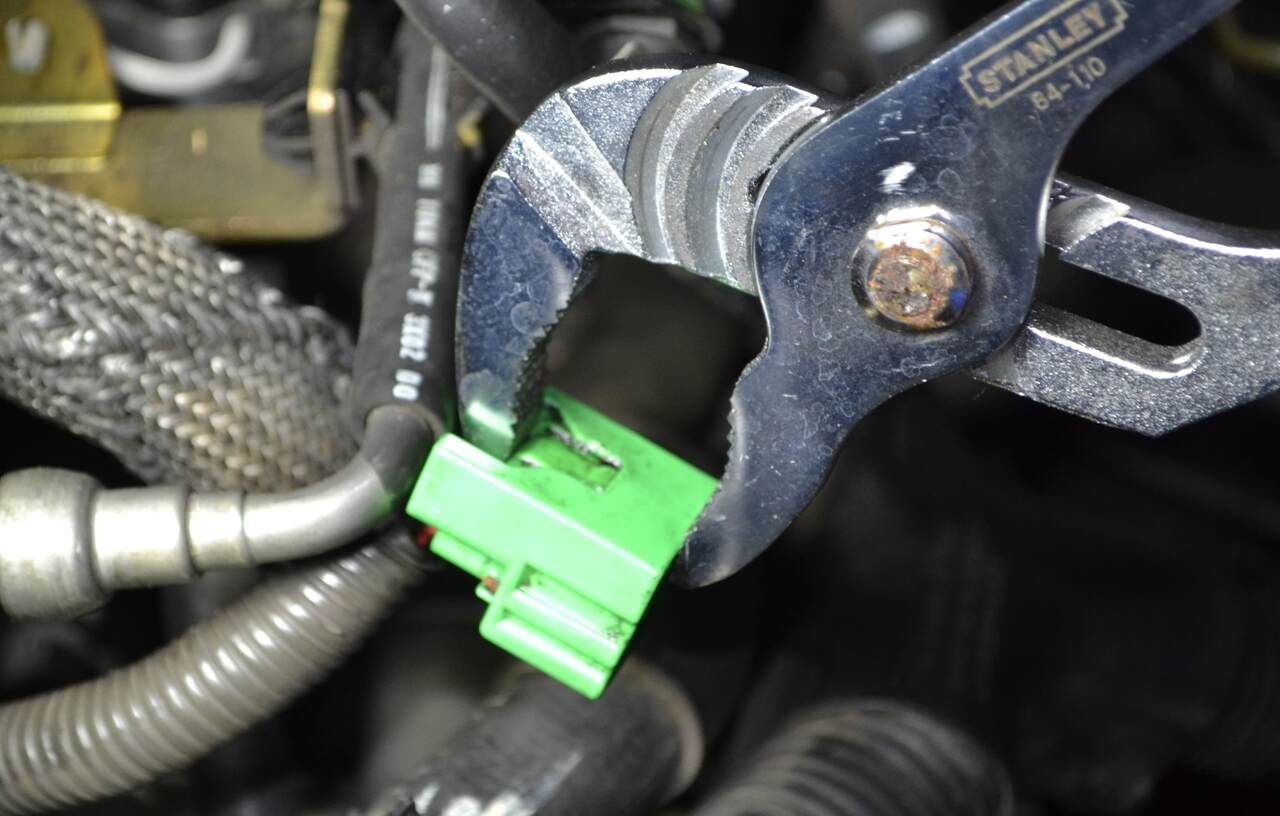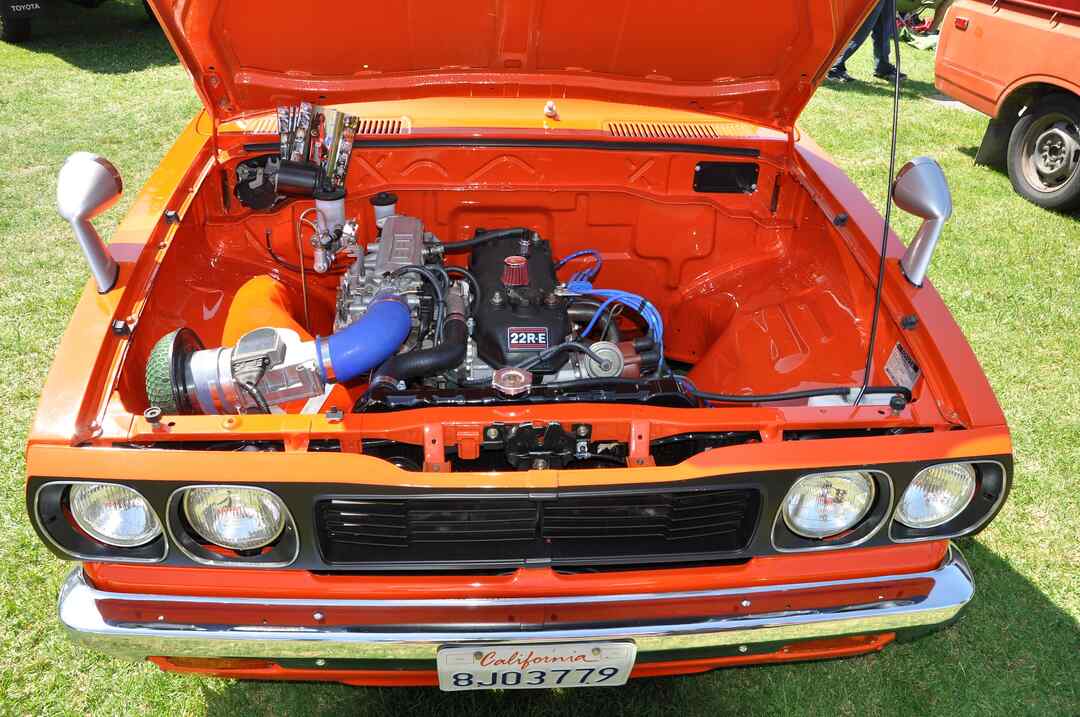What is a camshaft sensor? Camshaft sensors are electrical devices that accomplish what their name implies. They monitor camshaft position and speed and provide that information to the engine management module. This information is vital for the ECM to regulate the amount of fuel introduced into the combustion chamber. It also manages the timing of the ignition (spark) that sets the fuel ablaze.
The engine’s performance, efficiency, and emissions improve when the air/fuel combination is ignited at the optimal moment. Let’s find out how the camshaft position sensor works and how you can replace it. I will also discuss the camshaft sensor symptoms.
How Does A Camshaft Sensor Work?
The engine management system can pinpoint the precise crankshaft drive position thanks to the camshaft sensor. You’ll need this data to figure out things like ignition and injection points. When you press the accelerator of a newer car equipped with an auto-start/auto-stop system, gasoline and spark are sent to the cylinder in its power stroke relative to the crankshaft position.
You may receive a warning from a faulty camshaft sensor before it entirely breaks out and leaves you stuck. If you want to find the transmission speed sensor location, click here.
What Are The Symptoms Of A Bad Camshaft Sensor?
The Warning Light turned On
An illuminated “Check Engine” warning often indicates a faulty camshaft position sensor.
OBD II (on-board diagnostics II) systems can track hardware and software in a vehicle in an effective manner. It allows them to identify the gradual degradation of components that result in hardly noticeable performance changes before catastrophic failure.
When the Check Engine light comes on, you may attach a scan tool to the ECM and attempt to identify the issue. But it’s better to hire a professional for this. Costly engine or gearbox repairs may result from ignoring the Check Engine light.
Inadequate Driving Capability
The camshaft position sensor starts to lose its speed as it fails slowly. The slightest mismatch in fuel supply and ignition timing may result in sputtering, sluggish acceleration, a lack of power, stalling, or even the engine shutting altogether.
Issues with Gear Shifting and Transmission
If the engine control module (ECM) is not collecting information from it, the transmission shift solenoids won’t engage, and the gears won’t change. Some models have a feature that reduces engine power to prevent damage, called limp-home mode.
Poor Fuel Economy
Over fueling occurs when fuel injectors are kept open for too long due to inaccurate input from camshaft sensors. If too much liquid fuel builds up in the combustion chamber, it may produce banging and catastrophic damage to the engine. These are four signs of bad camshaft sensor you can recognize before replacing it.
Two Primary Types Of Camshaft Sensors:
For the powertrain control module (PCM) to know where the camshaft is about the crankshaft, it reads information from the camshaft position sensor (CMP). The PCM uses this data to regulate the fuel injectors and, in certain situations, the ignition system.
Hall effect and magnetic reluctance sensors are two types of camshaft sensors. There are three connections to the Hall effect component: a ground, a standard, and a signal. The PCM provides the camshaft sensor with a standard Voltage level, and the sensor responds with a signal proportional to the camshaft’s rotational speed. In contrast, the magnetic reluctance sensor generates its alternating current (AC) voltage when it moves through a reluctor roller inside the motor and has just two wires.
How to Replace Camshaft Sensor
· Step 1
Locate the camshaft sensor. When the camshaft turns, the camshaft sensor is right there with it. It is often found on four-cylinder motors near the valve cover. Crankshaft and camshaft sensors are often housed in the distributor of import vehicles like Hondas. You can not repair the sensors and the distributor at this point.
Sensors outside the distributor look like little cylindrical devices with two wires coming out of opposite ends. Sensors for V6 and V8 engines are often located in the intake manifold, just above the camshaft.
· Step 2
Push the tab and take the electrical plug from the sensor. Using a 10-mm socket and ratchet, take off the holding bolt. As you remove the camshaft sensor, twist it. There is always a degree of resistance to removing it because of how snug it is.
· Step 3
To avoid contaminating the replacement cam sensor’s tip, insert it into the housing. You can make it easier to insert it into its final location by twisting it while installing it.
· Step 4
To properly install the sensor, you will need to rotate it until the hole in the bracket is flush with the surface to which you want to attach it. Put the bolt in place and use the wrench to tighten it. Connect the sensor to an outlet by plugging the cord into its top. Now replacement is complete.
FAQ
What to do after replacing the camshaft sensor?
After replacing the sensor, use a diagnostic scanner to erase the error codes recorded in the engine controller due to the failure. After a replacement sensor has been correctly installed, the engine should function normally again. In the case of a failed sensor, it is impossible to fix it and put it to use again.
Where is the camshaft sensor located?
It features a cylindrical insert usually installed in the engine’s cylinder head. It is common to practice installing the Crankshaft Position sensor in the valve cover or on the side of the block where the cylindrical component enters.
What happens when a camshaft sensor goes bad?
The camshaft position sensor starts to lose its speed as it fails slowly. The slightest mismatch in fuel supply and ignition timing may result in sputtering, sluggish acceleration, a lack of power, stalling, or even the engine shutting altogether.
What does a camshaft sensor do?
The fuel injectors and coils are timed to fire in unison with the combustion process, and the camshaft position sensor is utilized to detect which cylinder is burning.
How much is a camshaft sensor?
One might expect to spend between $95 and $200 to repair it.
What causes the camshaft sensor to go bad?
Camshaft sensors may fail for various causes, including exposure to water, corrosion, poor wiring, and excessive heat. Preventing this from happening mostly depends on the level of care you provide to your vehicle.
Conclusion
Faulty camshaft sensors are a big inconvenience. If this occurs while parked, it’s only an annoyance, but it might be more difficult if it happens while driving your BMW. Here are some reliable BMW models in 2022.
There may be a problem with the camshaft sensor if your car isn’t performing well or if the “Check Engine” light is worn. If you ignore these warning signs, your car’s engine will eventually quit. Using these instructions, you can easily replace it.




